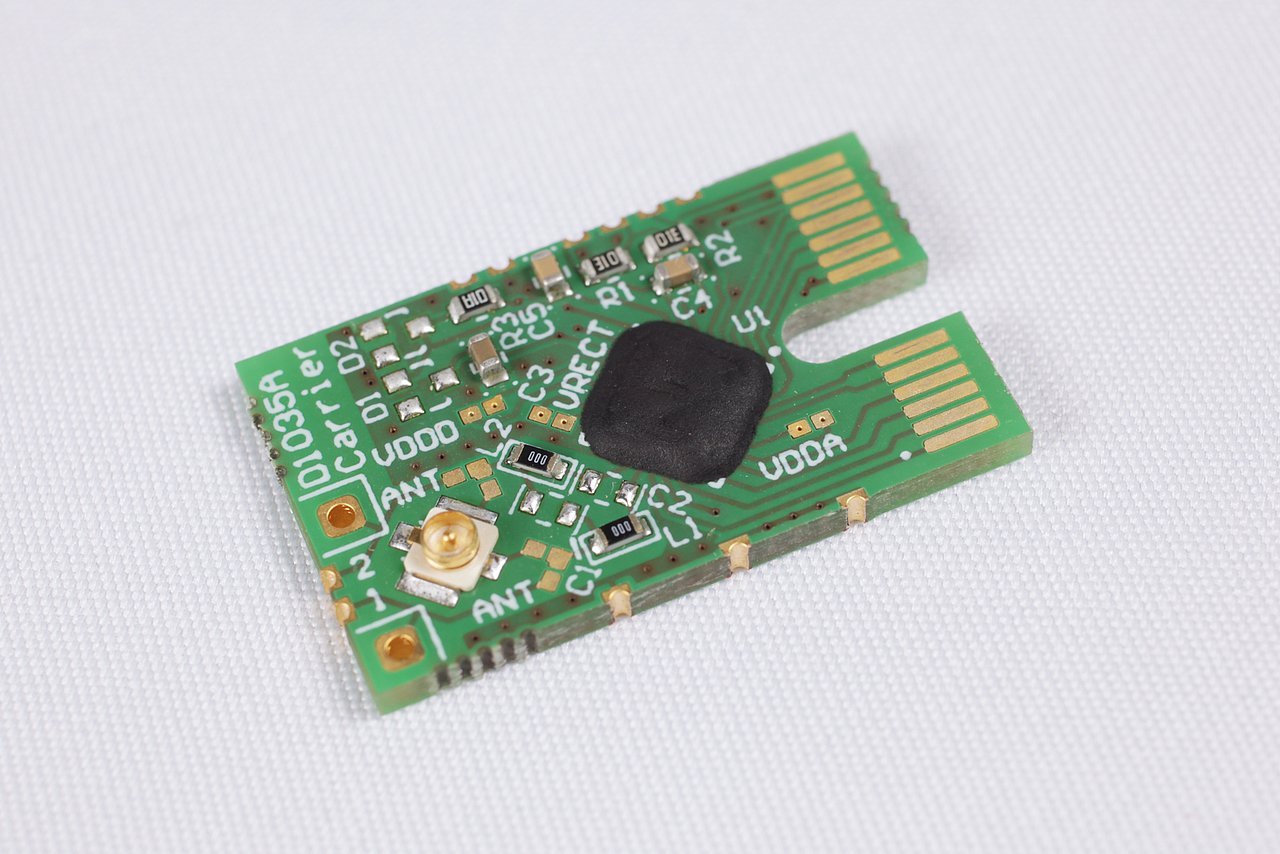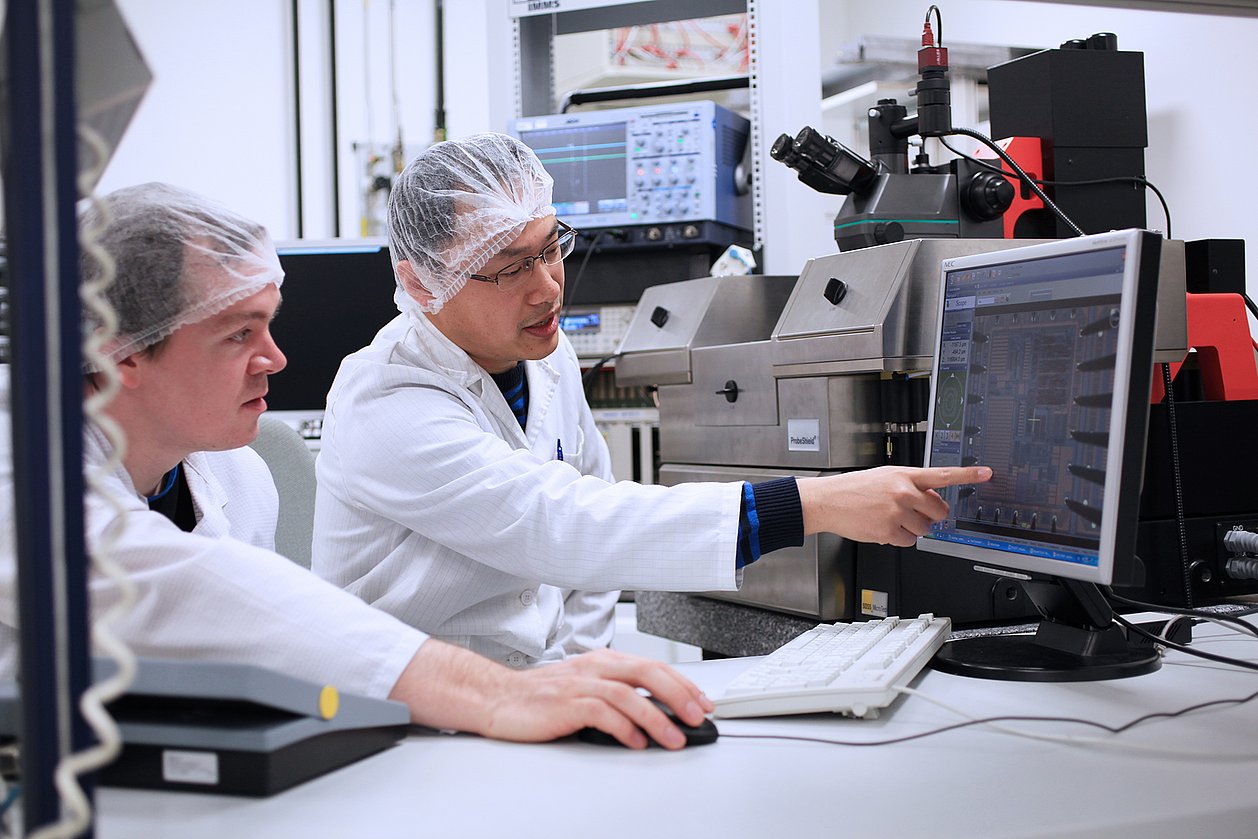Project StorAIge
We are researching the use of ultra-low power embedded memories in wireless sensor front-end ICs for monitoring the condition of wind turbines and individual plants produced in greenhouses.
Innovative, miniaturised and extremely power-saving wireless sensor solutions are the basic building blocks for Industry 4.0 applications
At IMMS, we are developing two wireless sensor ASICs for Industry 4.0 applications in the StorAIge project. In close cooperation with the consortium partners microsensys and endiio, we will develop a UHF RFID sensor transponder IC for monitoring plants in greenhouses and a wake-up receiver IC for monitoring wind turbines. These new and innovative ICs will use X-FAB's benchmark ULP memory to ensure that the chips require very little power to operate.
Development of a UHF RFID sensor transponder IC with extremely low power consumption for monitoring plants in greenhouses
In highly automated and modern greenhouses, plants are continuously moving on a conveyor belt to provide same climatic conditions to all the plants that are being produced. It is also very important to continuously monitor temperature and soil moisture of the individual plants to ensure that all plants have even growing conditions. Monitoring with battery-based wireless sensors is usually very expensive for such applications. Passive UHF RFID-based sensor transponders, in contrast, are not powered by batteries but by the energy from the readers and are therefore considered an excellent alternative.
The challenge here is to measure the soil moisture sensors without batteries at a range of two metres and to read them passively while the plants are moving continuously on the conveyor belt. With our know-how from the BMBF project RoMulus, we are currently developing an extremely low-power UHF RFID sensor with intelligent energy management for such demanding applications in the StorAIge project at IMMS.
Development of a wake-up receiver IC with extremely low power consumption for monitoring wind turbines
Among all components, the gearbox in wind turbines causes the largest share of those failures that have a direct impact on operating and maintenance costs. To prevent cost-intensive bearing damage in the event of a failure, extensive data, such as vibrations and the temperature, must be recorded locally via sensors and evaluated with local intelligence for diagnosis. Event-controlled wake-up receivers are a key component for the low-energy operation of sensors in such applications.
In StorAIge we will develop an ultra-low power wake-up receiver IC for wireless sensor applications at IMMS. The challenge is to ensure that the sensor nodes can operate under strict power consumption limits in the nanowatt range, among others, and are able to remain in a “sleeping but aware” state and immediately switch operating mode upon receiving a wireless wake-up signal. Our wake-up receiver aims to ensure that in demanding applications such as wind turbines, where extreme and difficult conditions prevail, faults can be detected quickly, and maintenance-intensive consequential damage can be avoided.
Acronym / Name:
StorAIge / Embedded storage elements on next MCU generation ready for AI on the edgeDuration:2021 – 2024
Project website:https://storaige.eu/
Application:
Environmental monitoring and smart city applications|Automation technology and Industry 4.0Research field:Integrated sensor systems
Partner
- ARCELIK A.S.
- Atlas Copco Industrial Technique AB
- Büyütech Yazilim Bilisim Savunma Elektronik Danismanlik Arastirma Gelistirme Sanayi ve Ticaret Limited Sirketi
- Commissariat à l’énergie atomique et aux énergies alternatives
- Consorzio Nazionale Interuniversitario per la Nanoelettronica
- CSEM Centre Suisse d’Electronique et de Microtechnique SA – Recherche et Développement
- EDC Electronic Design Chemnitz GmbH
- emmtrix Technologies GmbH
- endiio Engineering GmbH
- Ford Otomotiv Sanayi Anonim Sirketi
- Fraunhofer IPMS
- Institut Mikroelektronických Aplikací s.r.o.
- Interuniversitair Micro-Electronica Centrum
- Istanbul Medipol Universitesi Vafki
- Knowtion GmbH
- Kungliga Tekniska högskolan
- microsensys GmbH
- Pfeiffer Vacuum
- Politecnico Di Torino
- Reexen
- Soitec SA
- STMicroelectronics
- Strikersoft AB
- Technische Universität Darmstadt
- Thales DIS France SA
- Turkcell Teknoloji Arastirma Ve Gelistirme Anonim Sirketi
- Turkiye Bilimsel Ve Teknolojik Arastirma Kurumu
- Université d’Aix-Marseille
- Université Grenoble Alpes
- Uppsala Universitet
- Ústav teorie informace a automatizace AV ČR, v.v.i.
- X-FAB Dresden GmbH & Co. KG
- X-FAB Semiconductor Foundries GmbH
- ZF Friedrichshafen AG
Related content
A Charge Pump System with Controlled Input Impedance for Optimized RFID Energy Harvesting
Rohit Kesharwani1. Andre Jäger1. Martin Grabmann1. David Schreiber1. Georg Gläser1. Hani Abdullah1. Eric Schäfer1.2024 IEEE International Conference on RFID (RFID), Boston, MA, USA, June 4-6, 2024, DOI: doi.org/10.1109/RFID62091.2024.10582749
1IMMS Institut für Mikroelektronik- und Mechatronik-Systeme gemeinnützige GmbH, Ehrenbergstraße 27, 98693 Ilmenau, Germany.An Improved Architecture for a Fully Digital UHF RFID PIE-Stream Data Recovery Circuit
Georg Gläser1. Björn Bieske1. Jonas Lienke1. Martin Grabmann1. Hani Abdullah1. David Schreiber1. André Jäger1. Eric Schäfer1.EASS – Energieautonome Sensorsysteme 2024, 12. GMM-Tagung, Freiburg, Germany, 19. - 20. März 2024, pp. 37-39, ieeexplore.ieee.org/document/10659690
1IMMS Institut für Mikroelektronik- und Mechatronik-Systeme gemeinnützige GmbH, Ehrenbergstraße 27, 98693 Ilmenau, Germany.A UHF RFID to I2C Bridge IC with Configurable Power Storage Unit for Flexible RFID Sensor Applications
Jun Tan1. Muralikrishna Sathyamurthy1. Hani Abdullah1. Jonathan Gamez1. Bjoern Bieske1. Benjamin Saft1. Martin Grabmann1. Jacek Nowak2. Sylvo Jäger2. Eric Schäfer1.2021 IEEE International Conference on RFID Technology and Applications (RFID-TA), 2021, pp. 301-304, doi.org/10.1109/RFID-TA53372.2021.9617266, 6 - 8 October 2021, Dehli, India
1IMMS Institut für Mikroelektronik- und Mechatronik-Systeme gemeinnützige GmbH, 98693 Ilmenau, Germany. 2Microsensys GmbH, Erfurt, Germany.
Contact
Contact
Eric Schäfer, M. Sc.
Head of Microelectronics / Branch Office Erfurt
eric.schaefer(at)imms.de+49 (0) 361 663 25 35
Eric Schäfer and his team research Integrated sensor systems, especially CMOS-based biosensors, ULP sensor systems and AI-based design and test automation. The results are being incorporated into research on the lead applications Sensor systems for in-vitro diagnostics and RFID sensor technology. It will assist you with services for the development of Integrated circuits and with IC design methods.
Funding
The StorAIge project has received funding from the ECSEL Joint Undertaking (JU) under grant agreement No 101007321. The JU receives support from the European Union’s Horizon 2020 research and innovation programme and France, Belgium, Czech Republic, Germany, Italy, Sweden, Switzerland, Turkey. StorAIge is funded by the German Federal Ministry of Education and Research (BMBF) under the reference 16MEE0155T and by the Thuringian Ministry of Economic Affairs, Science and Digital Society (TMWWDG) under the reference 2021 ECS 0003.














